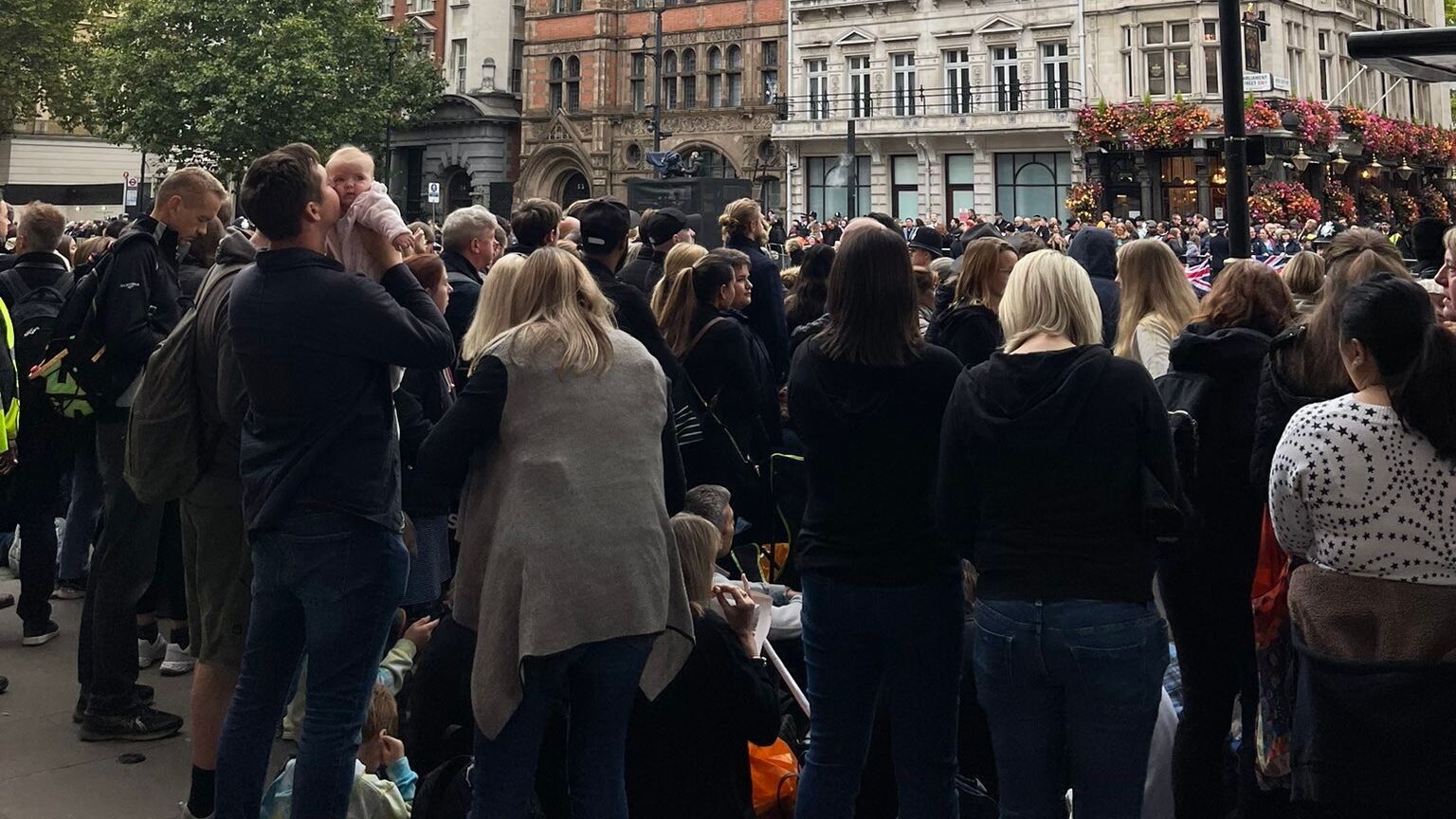
LONDON — The funeral for Queen Elizabeth was reportedly solemn and formal. The company of others and the knowledge that they had done everything in their power to express their gratitude to the late monarch, however, made it joyful for many people in the crowd outside Westminster Abbey.
A significant audience camped out and claimed spots along the area to bid the queen a final farewell and witness the pageantry in person, though many claimed that the gathering was lower than they had anticipated.
The early morning arrival of those who hadn’t spent the night there was accompanied by cameras and coffee cups. Some were dressed up in suits, skirts, and hats, while others were sporting T-shirts honoring the queen.
When it came to having a decent view, it was “every man for himself.” People fiercely guarded their positions along the pavement and atop concrete walls. Apart from that, everyone was in agreement about how amazing the queen’s service was, how elaborate the send-off was, or both.
Many people claimed that, in addition to catching a view of the queen’s coffin during the procession, the experience’s high point was the feeling of community and sharing the moment with people who, despite their other differences, were all together for the same reason.
The nicest part of her day, according to Sally Parr, was talking to people and making new acquaintances, even if she never saw them again. She was watching the proceedings from a mobile office chair she had borrowed from her son’s neighboring apartment.
“It was just a really pleasant, nice, everybody looking out for everybody, friendly, happy atmosphere, except when the queen went past when we all got very solemn,” she added.
Being there in person, according to Veronica Knibbs-Hughes, offered her the chance to express her admiration for the queen as well as make friends from other racial, socioeconomic, and cultural backgrounds. She claimed that taking part in the activity made her feel included.
“Sometimes you do feel a bit marginalized, a bit on the edge, and it’s nice to be included,” she added. “You feel uplifted, [it] helps your spirits, helps your growth and it ricochets. It helps society as a whole.”
She hopes the feeling of cohesion would persist for much longer than just one day or perhaps ten.
Chris Imafidon, a writer of books on the queen, claims to have interacted with her frequently while working for an educational nonprofit. He praises her for inviting poor kids to the yearly Commonwealth Service. He claimed that her focus motivated them and made them feel significant.
While acknowledging the “nasty, horrible” aspects of the institution she represented, Imafidon continued by saying he could tell the queen genuinely cared about equality. He cited her support for the independence of African countries as an example of how she acknowledged this as well.
“I’m not looking at the monarch, I’m looking at the mother,” said Imafidon, who was wearing a face mask and holding an umbrella with the queen’s image.
Most of the crowd didn’t start to disperse until the procession was safely out of site as they craned their necks to watch the queen’s coffin and other royals depart Westminster Abbey.
The mourners appeared cheerful and upbeat as they left despite being worn out from a long day of sorrow and, for many, after more than a week of it. Others intended to spend time with family or go to other memorials in the city while others had to travel back home.
The throng was unable to disperse fast due to continued military activity and locked barricades, although many people handled it well. They set out their snacks, unpacked their folding chairs, and even made cups of tea in anticipation of looking back on a day they would never forget.


